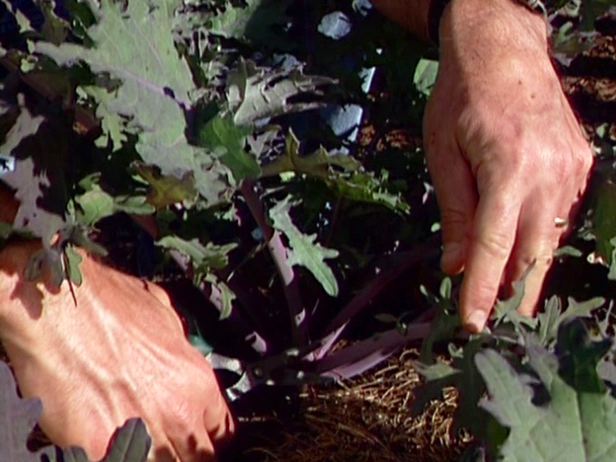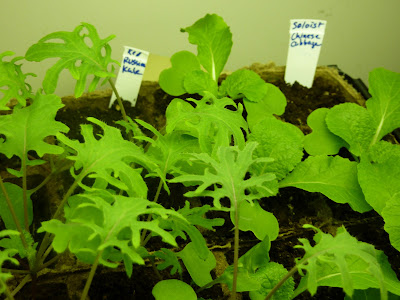

Cabbage aphids can be a nuisance but can be excluded with fine mesh netting Butterfly netting also stops butterflies from laying their eggs on your plants so that caterpillars won’t get a chance to decimate your crop. Make sure the netting is properly secured at the ground.
#Kale seedlings install
If you find that pigeons are tearing at the leaves then set up bird deterrent tape or install barriers of netting supported on, for example, canes with upturned bottles on the ends. Slugs sometimes prove a nuisance in wetter climates but they are easily picked off by hand and you can always set slug traps to limit their numbers. Nevertheless, it’s worth taking a few precautions against possible attack. Kale tends to be less prone to the catalog of pests and diseases that afflict other cabbage family crops. Remove damaged or yellowing leaves as they appear. Keep plants well watered and weeded, especially during the summer as they settle in and establish. Kale that will be harvested for smaller salad leaves can be planted closer to leave about 10in (25cm) between plants. Kale needs to be well anchored, so be sure to properly firm the plants into position so that the rootballs are in good contact with the soil. Dig a hole, pop the plant in and backfill with soil. Space the young plants about 18in (45cm) apart. Sow kale into plug trays for later transplanting to make the most of your garden space Transplanting Kale Leave them out for gradually longer periods until they’re staying out all day and night. Then, about a week before planting, start moving plants outside so they can acclimatize. Should two seedlings grow remove the weaker of the two.ĭepending on how soon you plan on planting your kale you may need to pot your seedlings on into larger containers. Sow two seeds per plug or pot, cover, and water. Firm it in with your fingertips then make holes about half an inch (1cm) deep. Once you’ve harvested the previous crop, your sturdy young kale seedlings will be ready to plant.įill plug trays or small pots with multipurpose potting soil. This way you can get seedlings growing while other crops are still in the ground. To make the most of the space you have it’s almost always better to start plants off in plug trays or pots. Kale needs plenty of room to develop properly.
#Kale seedlings how to
Kale needs rich soil to grow to its full potential How to Sow Kale

Add plenty of compost to the ground before planting and if your soil isn’t especially rich, top up its fertility by applying a balanced organic fertilizer such as chicken manure pellets a week or two before planting. Like cabbage, kale grows best when well-fed. Give it a sunny position in order to encourage stronger growth during the dark winter months. It stands up to frosts with ease and thrives in just about any well-drained, fertile soil. Hardy kale is the most reliable crop of the cabbage family. Many kale varieties are stunning enough to include in the ornamental garden Where to Grow Kale Kale is best sown from late spring to early summer, which makes it the perfect choice to follow on from earlier crops such as garlic, fava beans, or early salads. And then there’s the opportunity to grow red or purple kale, which we reckon wouldn’t look out of place in any ornamental border. Kale is a stunning vegetable, with varieties that offer a choice of frothy, frilled leaves crinkled leaves and flatter leaves suitable for both cooking and salads.


 0 kommentar(er)
0 kommentar(er)
